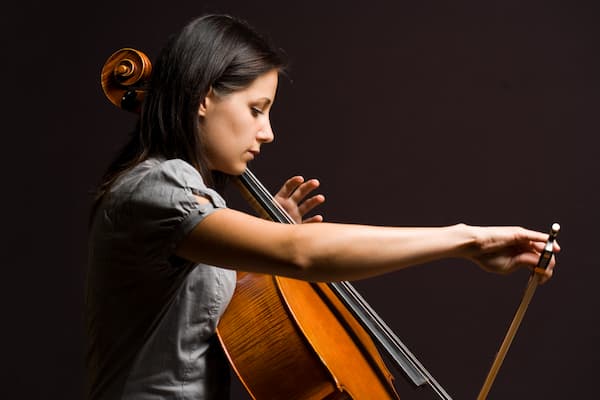The sound of the cello is beautiful and haunting. Its deep, resonant sound will make your music stand out from the rest. With a wide range and low notes, it is perfect for adding emotion to any piece. Many consider the cello to be the closest sounding instrument to the human voice. Its beautiful and captivating sound is what draws people to the cello.


Over time, strings become thin and can snap when tuning or playing. The broken string should be removed and then replaced with a new string. Rarely should the whole set need to be replaced at once. It can take some time for new strings to adjust, so it is not advisable to replace them before a big event.
Here are a few good options:
The general guidelines are:
The level to which a cello is out of tune will determine whether to start the tuning process with the pegs or the fine tuners. If the cello is fairly out of tune (anything a half-step or more off of the pitch center), then it is best to start tuning with the pegs. When the peg is turned toward the front of the cello, the pitch of the string will descend or become “flatter” as the string loosens. Likewise, if the peg is turned toward the back side of the cello, or toward the top of the scroll, this will raise the pitch, making it “sharper” as the string tightens. It is best to be careful and go slowly while tuning! If the string is tighten too much, it can break. If the string is loosened too much too quickly, it can unwind entirely. Pegs should always be adjusted while facing away from them; strings can snap while tuning and cause harm.
When not being played, the bow should be loosened so the hair will not be stretched and has time to relax. The bow needs to be tightened in order to play but never made too tight. There should still be a curvature on the bow stick.
The rosin gives resistance on the bow. Rosin is a resin that comes from pines or plants. Without rosin, the bow will just glide across the strings, producing no sound. The bow must be rosined often. The rosin will often leave behind a small white residue on the cello. This will need to be wiped off to avoid a sticky mess on the wood.
Light rosin is generally hard and less sticky. It is ideal for warmer climates and areas with high humidity levels. Light rosin is best suited for violins and violas and creates less dust. Dark rosin is generally softer and stickier than light rosin. It is best used in cooler climates and in dry areas. Dark rosin is best suited for cellos and doubles basses and creates more dust. Light rosin is still an option for a cello. One could use light rosin in the summer and dark rosin in the winter or whichever is best suited to the player.
With the school being conveniently located in Orange Park, it is just a short drive for our students from Fleming Island, Green Cove Springs, Oakleaf, and Jacksonville.
For those who are not local, virtual lessons are also available.
[instagram-feed feed=1]

©2024. All Right Reserved. Built by Berean Web